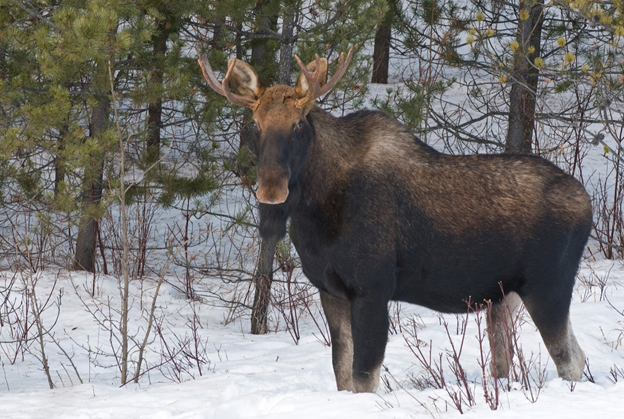 From winter 2013-2014 to 2015-2016, a total of 41 moose were captured and equipped with satellite collars throughout the Tl’azt’en Nation traditional territory to measure their movements and habitat use. Funding for this project was a collaborative effort among the John Prince Research Forest, Tl’azt’en Nation, Nak'azdli Nation, and Provincial government. Moose are an important subsistence food source and even though regular aerial surveys are implemented to monitor trends, we know very little about their ecology in central BC. Recent declines in moose populations are of concern and knowledge of seasonal movements and habitat use are important for interpreting surveys that measure trends in moose population numbers. Moose survival and sources of mortality are also an important component of understanding population status and trends. Data from moose survival and mortality will contribute to a larger sample of moose across BC while data on moose movement and habitat ecology will be analyzed by JPRF staff and UNBC colleagues. This project will provide some very important information on moose ecology in central BC that can be incorporated into management, monitoring, and conservation strategies.
From winter 2013-2014 to 2015-2016, a total of 41 moose were captured and equipped with satellite collars throughout the Tl’azt’en Nation traditional territory to measure their movements and habitat use. Funding for this project was a collaborative effort among the John Prince Research Forest, Tl’azt’en Nation, Nak'azdli Nation, and Provincial government. Moose are an important subsistence food source and even though regular aerial surveys are implemented to monitor trends, we know very little about their ecology in central BC. Recent declines in moose populations are of concern and knowledge of seasonal movements and habitat use are important for interpreting surveys that measure trends in moose population numbers. Moose survival and sources of mortality are also an important component of understanding population status and trends. Data from moose survival and mortality will contribute to a larger sample of moose across BC while data on moose movement and habitat ecology will be analyzed by JPRF staff and UNBC colleagues. This project will provide some very important information on moose ecology in central BC that can be incorporated into management, monitoring, and conservation strategies.

 Respect for the People
Respect for the People